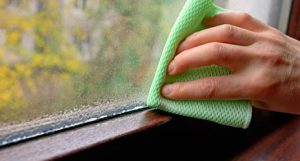 Does my Heat Recovery Ventilator (HRV) have a problem? Do you have condensation in your windows?
Does my Heat Recovery Ventilator (HRV) have a problem? Do you have condensation in your windows?
No, your HRV is not the problem.
An HRV is an effective, energy-efficient and healthy method of managing moisture in your home in the winter, but your HRV does not remove condensation from your windows, it removes excess moisture in the air.
If condensation forms in your windows, it is because the temperature of the surface of the window is lower than the dew point of the surrounding air. There may be several reasons why the window temperature is below the dew point of the air such as poor window quality or too high a dew point.
The condensation in your windows is the same as the condensation that forms on a cold beverage can on a hot, humid summer day. The surface temperature of the can is lower than the dew point of the air outside.
The dew point of the air depends on the amount of water vapour in the air. The higher the relative humidity, the higher the dew point and the more condensation will occur at high temperatures. For example, air at 21°C and 40% relative humidity has a dew point of 8°C.
All surfaces with a temperature of 8°C or less, such as a window, will become covered by a layer of water droplets.
To eliminate condensation in windows, there are two solutions.
- Lower the dew point of the surrounding air, or
- Increase the temperature of the window surface
To lower the dew point
Your HRV is the perfect appliance for lowering the dew point of the air when it is cold outside. Your HRV will evacuate moist, stale air from your home and replace it with fresh, dry air from outside, lowering the dew point. Why is the air outside dryer? Because cold air holds less water vapour than warm air. When cold air is heated, first through the HRV and then through the home’s heating system, the relative humidity drops.
There are other technologies that can also lower the dew point of your home, for example, a dehumidifier. However, a dehumidifier does not supply any fresh, filtered air.
Increase the temperature of the window surface
The only other possible solution to eliminate condensation in the windows is to increase the temperature of the inner surface of your windows.
Window panes are exposed to very large temperature differentials in the winter. Some windows are better than others at preventing heat loss through transmission. For example a single pane will have almost the same temperature on the inside surface as the outside surface, whereas triple pane windows with air gaps will provide more insulation and significantly reduce heat loss, meaning the inside surface temperature will be closer to the room temperature.
The most effective method for increasing the temperature of the inner window surface is to promote air flow across it. Window treatments, such as curtains or blinds, create “microclimates” near the window and lower the surface temperature, which helps to form condensation.
To promote air circulation near windows, you can:
- Open the curtains and raise the blinds
- Use a fan to blow air toward the windows
- Place a heat source under the window
If your windows are very old and need to be replaced, energy efficient windows (such as triple-pane) will also help ensure the interior surface temperature of the window is higher. Regardless of the quality of the window, if a “microclimate” is created on the window surface due to a lack of air movement, there could still be some condensation, depending on the outdoor temperature and the indoor dew point.
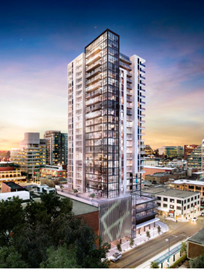 Charlie West Condos in Kitchener, Ontario to include 308 ALDES InspirAir® Compact ERV (Energy Recovery Ventilator) with EC motors providing high-efficiency ventilation and improve indoor comfort to residents. With its impressive height reaching 26 storeys, Charlie West will create a sleek silhouette rising above Downtown Kitchener. The 245 chic condominium suites feature modern, high-end finishes and expansive windows that offer unrivaled views of Victoria Park with its majestic trees and lush landscaping. Living there puts you directly on the new ION Light Rail Transit route. It’s a short walk from Google Canada’s new office and Kitchener’s Innovation District (home to global tech companies, startups and universities). The development is scheduled for completion in 2021.
Charlie West Condos in Kitchener, Ontario to include 308 ALDES InspirAir® Compact ERV (Energy Recovery Ventilator) with EC motors providing high-efficiency ventilation and improve indoor comfort to residents. With its impressive height reaching 26 storeys, Charlie West will create a sleek silhouette rising above Downtown Kitchener. The 245 chic condominium suites feature modern, high-end finishes and expansive windows that offer unrivaled views of Victoria Park with its majestic trees and lush landscaping. Living there puts you directly on the new ION Light Rail Transit route. It’s a short walk from Google Canada’s new office and Kitchener’s Innovation District (home to global tech companies, startups and universities). The development is scheduled for completion in 2021.



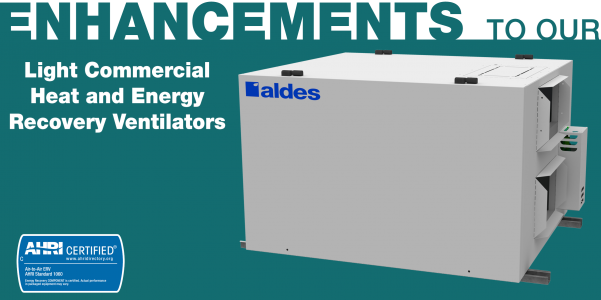
 Does my Heat Recovery Ventilator (HRV) have a problem? Do you have condensation in your windows?
Does my Heat Recovery Ventilator (HRV) have a problem? Do you have condensation in your windows?
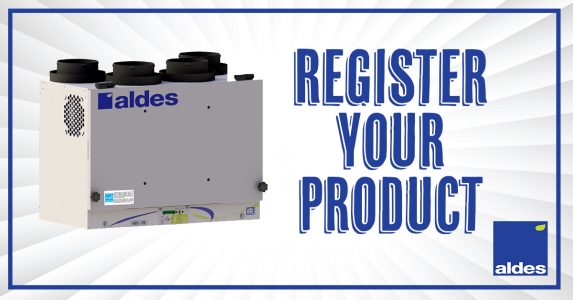
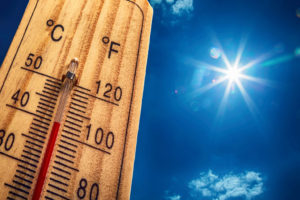
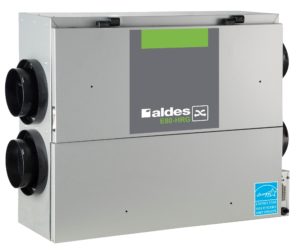
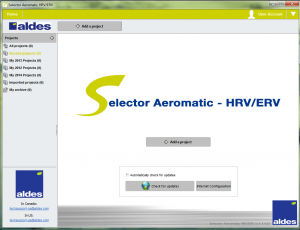 Aldes North America is thrilled to announce that our updated Aldes Selector HRV/ERV selection software (v.1.13.0.0.exe) is now available!
Aldes North America is thrilled to announce that our updated Aldes Selector HRV/ERV selection software (v.1.13.0.0.exe) is now available!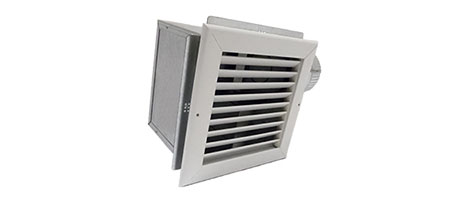 The residential ventilation strategy of using an HRV and
The residential ventilation strategy of using an HRV and  Across Canada, heating season is fast approaching. While it is still warm out, it’s an ideal time to open up your HRV and do the annual maintenance: clean the heat-recovery core, wash or replace the filters, and ensure that the drains are clear of any blockages. Our new and improved residential
Across Canada, heating season is fast approaching. While it is still warm out, it’s an ideal time to open up your HRV and do the annual maintenance: clean the heat-recovery core, wash or replace the filters, and ensure that the drains are clear of any blockages. Our new and improved residential